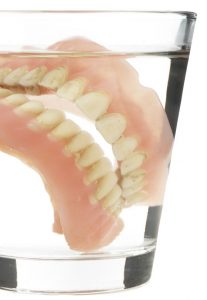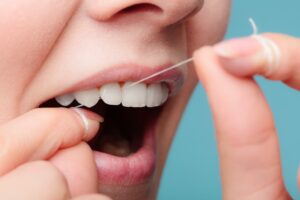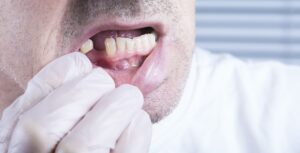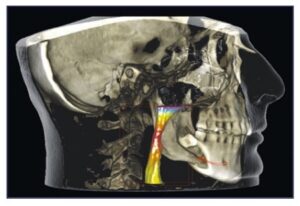Header logo
header top contact widget
Blog Archives
Recent Posts
Categories
Archives
- September 2024
- August 2024
- July 2024
- June 2024
- May 2024
- April 2024
- March 2024
- February 2024
- January 2024
- December 2023
- November 2023
- October 2023
- September 2023
- August 2023
- July 2023
- June 2023
- May 2023
- April 2023
- March 2023
- February 2023
- January 2023
- December 2022
- November 2022
- October 2022
- September 2022
- August 2022
- July 2022
- June 2022
- May 2022
- April 2022
- March 2022
- February 2022
- January 2022
- December 2021
- November 2021
- October 2021
- September 2021
- August 2021
- July 2021
- June 2021
- May 2021
- April 2021
- March 2021
- February 2021
- January 2021
- December 2020
- November 2020
- October 2020
- September 2020
- August 2020
- July 2020
- June 2020
- May 2020
- April 2020
- March 2020
- February 2020
- January 2020
- December 2019
- November 2019
- October 2019
- September 2019
- August 2019
- July 2019
- June 2019
- May 2019
- April 2019
- March 2019
- February 2019
- January 2019
- December 2018
- November 2018
- October 2018
- September 2018
- August 2018
- July 2018
- June 2018
- May 2018
- April 2018
- March 2018
- February 2018
- January 2018
- December 2017
- November 2017
- October 2017
- September 2017
- August 2017
- July 2017
- June 2017
- May 2017
- April 2017
- March 2017
- February 2017
- January 2017
- December 2016
- November 2016
- October 2016
- September 2016
- August 2016
- July 2016
- June 2016
- May 2016
- April 2016
- March 2016
- February 2016
- January 2016
- December 2015
- November 2015
- October 2015
- September 2015
- August 2015
- July 2015
- June 2015
- May 2015
- April 2015
- March 2015
- February 2015
- January 2015
- December 2014
- November 2014
- October 2014
- September 2014
- August 2014
- July 2014
- June 2014
- May 2014
- April 2014
- March 2014
- February 2014
- January 2014
- December 2013
- November 2013
- October 2013
- September 2013
- August 2013
- July 2013
- June 2013
- May 2013
- April 2013
- March 2013
- February 2013
- January 2013
- December 2012
- November 2012
- October 2012
- September 2012
- August 2012
- July 2012
- June 2012
Flu Season, Covid Worries Bring Dentures To A Worrisome Light
Posted on Nov 28, 2022 by William J. Claiborne, DDS MS
With the flu season now underway, 2022-23 seems especially concerning. The severity of flu for certain population segments is coupled with added concerns about increasing cases of the Covid virus. This has older adults, in particular, taking added precautions with mask wearing, limiting public outings, and ensuring vaccines are up to date.
When it comes to contributors to acquiring the flu, however, oral health is one that is often overlooked. Things like wearing dentures and having gum disease can create higher susceptibility to developing the flu (as well as other health problems) than many are aware.
Losing teeth in a lifetime happens. However, it is most prominent in adults as they age. Over a life span, teeth take an enormous brunt of wear and tear. More than 13% of adults between ages of 65 – 74 have lost all of their teeth with this percentage doubling after age 75. (https://www.cdc.gov/oralhealth/basics/adult-oral-health/adult_older.htm)
Because older adults comprise a significant portion of the population, tooth loss is an especially troubling health concern. According to the Centers for Disease Control & Prevention (CDC), the number of U.S. adults ages 65 and older is expected to reach nearly one-fourth of the overall population by the year 2060.
While replacing teeth can be done rather inexpensively through dentures, replacing the presence of teeth is very different from replacing their function. Dentures do very little to support the ability to bite confidently and chew thoroughly. Here’s why…
When dentures are first made, they are conformed to fit the specific curves and arches of the existing bone ridge where teeth were once held. Without natural tooth roots in the jaw bone (where natural teeth were once supported), the bone begins to shrink, or “resorb.”
As resorption progresses, the arch where teeth were held begins to flatten. Thus, the foundation of the denture becomes less and less. This results in dentures that slip when eating or rub uncomfortable sore spots on tender gums. At first, more-frequent applications of denture pastes help somewhat. Eventually, they are of little help.
Dentures are hardly supportive to good digestion or nutritional health. Long-time denture wearers often alter their food choices to accommodate their less-than-dependable ability to chew. Fresh fruits and vegetables are bypassed for softer, cooked versions. Pasta is chosen over protein-rich meats. Grains and seeded foods conjure up the fear of seeds being caught under the denture, piercing into tender gums.
In addition to lacking to meet nutritional needs, there are concerns surrounding the cleanliness of dentures. Their gum-colored base is made up of a porous material, capable of housing millions of bacterial organisms. It’s no wonder bad breath is a common problem for denture wearers.
According to RDH magazine, “research has isolated Staphylococcus aureus, Streptococcus mutans, Klebsiella pneumoniae, Escherichia coli, and hundreds of other garden-variety germs in acrylic dentures.” (https://www.rdhmag.com/patient-care/xerostomia/article/16407070/5-things-you-should-know-about-dentures)
Aging adults should also be aware that dentures can literally make you sick. In a study of 524 seniors (with an average age of 88), Japanese researchers noted higher incidences of pneumonia-associated events occurred among the 453 participants who were denture wearers. Nearly 41 percent wore their dentures during sleep and showed higher risk for pneumonia than those who removed their dentures at night. (https://www.rdhmag.com/infection-control/article/16404123/dentures-and-aspiration-pneumonia)
Certainly, having good oral health has proven to support good overall health. However, the appearance of a smile is also important. Because of the accelerated pace of bone loss from wearing dentures, facial changes begin to show through. At first, there may be deep wrinkles around the mouth. The corners of the mouth turn downward, even in a smile.
As bone loss continues, jowls form from the detachment of facial muscles. The chin takes on a pointed look and the mouth seems to collapse into the face. These changes tend to project a facial appearance that is far older than one’s actual years. For many people, looking old makes them feel old.
The choice of dentures, for most patients, is made because they provide the cheapest option to replace teeth. With all the arguments against dentures, we also understand the patient’s preference to save money. However, once you factor in all the health risks associated with dentures, dental implants stand out as being an important part of avoiding life-threatening illness. And, since dental implants are designed to last a lifetime, they are an excellent investment.
One way to enjoy the advantages of dental implants while keeping costs down is to secure a denture to dental implants. In this, only 6 or 8 dental implants are often sufficient to securely support a full denture.
This means that a “wobbly” or “slippery” denture can be firmly secured (even using the patient’s existing denture in some cases). This implant-supported denture halts resorption and restores biting and chewing strength.
The first step is to discuss options for tooth replacement that are appropriate for your specific needs and goals. As an Asheville periodontist, I know that many people are pleased to learn that dental implants are affordable through easy, monthly payment plans. Treatment can also include oral or I.V. sedation (twilight sleep).
Support your overall health by ensuring your oral health is at its best. Begin by scheduling a consultation appointment by calling 828-274-9440 or visit: https://www.biltmoreperiodontics.com/locationcontact-us/
And, visit our site’s technology page to learn the advantages of these features:
Boost Immune System By Investing In Gum Health
Posted on Nov 17, 2022 by William J. Claiborne, DDS MS
There is no argument that the price of about everything has gone up and up over the past couple of years. The challenges that most individuals face at this time have been significant for some people but felt by about all.
Yet, there are still reasons to “spend less now so we’re not spending more later.” This is true with things such as auto maintenance, home repairs and taking good care of our health. A signifiant part of maintaining good overall health is having good oral health. The key, however, is to make the investment while the costs are still low, and avoid the big expenses later to pay for repairs and more extensive treatment.
I’d like to point out the need to bolster our immunity system, brought front-&-center during the pandemic, is actually supported by your oral health. Although the Covid virus continues to be a threat, the experience has made populations more aware of the benefits of vaccines and healthy habits such as hand-washing. Still, it is in our immune system that makes people more or less vulnerable.
By investing in having healthy gums, the immune system is actually supported more than is largely known. I’ll explain.
The bacteria in the mouth, or “oral cavity,” is intricately connected to your overall health; so much so that “bad” oral bacteria can disrupt the healthy balance in the digestive system. This bacteria comes from oral plaque, which is a cesspool of sorts formed from bacteria accumulation.
As a layer of biofilm, plaque coats teeth and gums. It is the sticky coating you feel in your mouth when you wake up, during which time the bacteria has had an opportunity to amass during sleep. Plaque, mot removed, becomes tartar. This hardened mass of oral bacteria continues to grow, doing damage in the mouth and far beyond.
Researchers have tracked oral bacteria as it enters the bloodstream. This occurs through weakened gum tissues, allowing the bacteria to travel throughout the body. Studies have shown that the bacteria are able to activate or worsen the development of a number of serious health problems.
These include heart disease, stroke, arthritis, diabetes, preterm babies, some cancers, erectile dysfunction and dementia. Research is currently being conducted to further the connections suspected between periodontitis to Alzheimer’s disease.
How does oral bacteria become destructive? Gingivitis is the initial stage of gum disease. Symptoms typically include gums that are tender in spots and some bleeding when you brush. These are warning signs that signal an immediate need for attention.
Periodontal (gum) disease and (often) its subsequent tooth loss are, simply put, products of bacterial overload in the mouth. The mouth is constantly being supplied with sustenance for these organisms. Bacteria are able to thrive through food that enters, especially sugars, and other bacteria-laden items put into the mouth.
The bacteria that cause cavities that feeds on sugar from the foods and drinks you consume. This weakens tooth enamel due as bacteria convert sugar into acids. As bacteria thrive, they are able to reproduce very rapidly.
When bacteria levels become more than the immune system can tackle, infection can set in. Accumulation of bacteria can evolve into gum disease, which is an inflammation that attacks teeth, oral tissues and the bone structures that support tooth roots.
Gum disease symptoms are those more prominent than gingivitis. These include sore gums that bleed when brushing, persistent bad breath, gums that pull away from the base around teeth, gums that darken in color.
As it worsens to the stage known as periodontitis, pus pockets may form on the gums at the base of some teeth. In advanced stages, gum disease causes teeth to loosen and eventually require removal.
The reason that 6-month dental check-ups and dental cleanings is to remove tartar buildup before damage can occur. Your hygienist and dentist can look for signs of gum disease so measures can be taken before the disease explodes into the need for more costly treatment to resolve the problem. Since gum disease is the nation’s leading cause of adult tooth loss, the associated expenses of replacing teeth can also be avoided by maintaining good oral health.
Prevention begins at home: Begin by twice daily brushing with a soft bristle tooth brush and use a fluoridated tooth paste. Brush for at least two minutes each time. Floss daily. Be sure not to pop the floss between teeth to avoid damaging tender gums. Move the floss in a back-&-forth motion between teeth to ease it down so you can scrape the sides of each tooth.
You can remove a tremendous amount of oral bacteria by using a tongue scrapper daily. Or, brush your tongue with your tooth brush at the end of each brushing. This helps to dislodge bacteria that is embedded in the grooves of the tongue.
Drink lots of water during the day. This will help keep saliva flow at ample levels. Saliva is designed to move oral bacteria from the mouth on a consistent basis. Oral dryness is the enemy. Avoid foods and beverages that are drying to oral tissues such as caffeine, alcohol, and spicy foods. Also, try to minimize the amount of sugar and carbohydrates you consume. These foods amplify the reproduction of oral bacteria.
Oral dryness gives bacteria a favorable environment for reproduction. The chemicals in cigarette smoke are very drying to oral tissues. If you smoke, consider using an oral rinse that replenishes moisture in the mouth. Some oral rinses are specifically designed for moisture.
Lowering treatment costs begins with early care: If you have delayed or avoided regular dental care, it is recommended that you begin by having a periodontal examination. A periodontist is a dental specialist who can determine your precise level of gum disease and the most appropriate treatment to restore good oral health. We can detect all stages of gum disease and provide comfortable, thorough treatment to restore your gums to a health state.
If you have lost teeth due to periodontal disease, a periodontist also specializes in the diagnosis and placement of dental implants. This ideal method to replace teeth provides a lifetime solution, making them an excellent investment.
Call 828-274-9440 if you have questions about your gums or if you are experiencing any symptoms associated with gum disease. Also, visit our web site to learn more about our sedation options (including “twilight sleep”) and advanced technology, which often reduces treatment time while enhancing comfort.
Visit: https://www.biltmoreperiodontics.com/
The “Why” & “How” of Dental Implants
Posted on Nov 09, 2022 by William J. Claiborne, DDS MS
According to the Centers for Disease Control & Prevention (CDC), over one-fourth (26%) of American adults ages 65 and older have 8 or less natural teeth. The CDC equates this number (having 8 or fewer teeth) as “severe tooth loss” since it impacts an individual’s ability to thoroughly eat a healthy diet.
An even worse statistic shared by the CDC is 1 in 6 (17%) adults ages 65 and older have lost all of their teeth.
When it comes to losing natural teeth, they also share that the most vulnerable older adults are those who are poor, have less than a high school education, or are cigarette smokers.
Being totally edentulous (having lost all teeth) amongst the 65 or older age group has fortunately declined over the years. The CDC shared that the figure dropped by more than 30% from 1999–2004 (when it was 27%) to 17% in 2011–2016. At least American adults are moving in the right direction.
https://www.cdc.gov/oralhealth/fast-facts/tooth-loss/index.html
Tooth loss is a bigger deal than is assumed by a large segment of the population. When a natural tooth is removed, its absence causes a reaction that begins below the gum line. What occurs initially is typically not obvious. Yet, the repercussions of “resorption” can become quite the dilemma.
The absence of a tooth root in the upper or lower jaw bone is a loss of stimulation to the bone mass where it was once positioned. These roots provide both stimulation and nourishment that enables the bone to maintain a healthy mass. Without the presence of tooth roots, the bone begins to “melt away.” This process is known as resorption.
Think of the stimulation that tooth roots provide to how you might muscle atrophy. We all know that muscles, not used, will shrink in mass. When the jaw bones are lacking stimulation by the tooth roots they’re designed to hold, bone mass begins to shrink.
Resorption begins shortly after the tooth root is removed. Once it starts, it continues at an ever-increasing pace. For example, the first year after a tooth root is missing, the loss of bone may be minimal. With each passing year, the pace of loss accelerates.
As the bone shrinks in height, the natural tooth roots adjacent to the area of missing teeth are subject to movement and root damage. On average, the next teeth you’re most likely to lose are the ones bordering areas of missing teeth.
Obviously, it is important to replace lost teeth before bone loss begins. For the support of remaining natural teeth, it’s also important to replace missing teeth as soon as possible so adjacent teeth can retain their proper positions. And, it’s HOW you replace them that’s most important.
Because dental implants replace the tooth above the gum line AND the root portion below it, the bone is able to retain its mass. Through the sturdy foundation of the jaw bone, dental implants are able to restore the look, feel and chewing stability like that of natural teeth.
As a periodontist, I specialize in the prevention, diagnosis, and treatment of all stages of periodontal (gum) disease. I also have advanced training and skills in the selection and placement of dental implants. In addition, periodontists are particularly skilled in performing cosmetic periodontal procedures.
Our Western NC periodontal dental office features some of the most advanced technology available. This cutting edge technology is beneficial in a number of ways, with much specifically helpful in optimal dental implant diagnosis and planning. This includes:
LANAP With PerioLase MVP 7 – Laser-Assisted New Attachment Procedure is an advanced protocol that efficiently and effectively treats advanced gum disease with the added advantages of a dental laser. For patients who are preparing for dental implant placement, resolving gum disease prior to treatment is mandatory. LANAP offers a non-surgical alternative for patients with moderate to severe periodontal disease with very little discomfort and a quick recovery time.
Cone Beam Imaging – These amazing 3D “x-rays’ are ideal for diagnosing and treatment planning. The highly-detailed images provide a clear view of the upper and lower jaw. Because cone beam radiographs show sagittal, axial, and coronal planes, locating and tracking nerve canals optimizes implant placement. The images are captured in a quick, painless process and at minimal levels of radiation.
CareStream Cone Beam Computer Tomography Imaging – This enhanced tomography works with 3D imaging for exceptional detail and range.
Computerized Dental Implant Placement – This system provides the futuristic ability to position dental implants before the process actually begins. Through computerized technology, the implants are selected and “ideally positioned” on a 3D model of the patient’s jaw. From this, a template is developed for optimal treatment success, even for complex cases.
CS 3600 Intraoral Scanner – Rather than make impressions with bulky, goopy trays, this scanner quickly and comfortably captures digital impressions accurately and easily. These are used to create precision models or appliances (dental implant crowns, bridges, or full arches). The scanner can also reach hard–to–access areas in the patient’s mouth for superior results with improved patient comfort.
Sedation – Our Asheville periodontal practice is known for its environment of comfort and respectful care. We understand that over 70 percent of the adult population have some level of dental fear or anxiety. For optimal comfort and relaxation, we offer several sedation options, including oral and IV sedation. With both sedation options, patients are closely monitored with advanced safety equipment throughout treatment.
• Oral sedation is a pill that helps patients relax. It also has an amnesiac effect, leaving most with little or no memory of treatment afterward.
• I.V. sedation (also known as ‘twilight sleep‘) places the patient in a deeper sleep state and erases memory of the procedure. It is administered by a Medical Doctor (MD) who is a board certified Anesthesiologist.
Ideal diagnosis is important, and can save the patient much in overall treatment costs. For example, when missing more than one tooth in one area, one implant can often hold two or a bridge of teeth. Several strategically-placed implants may also be used support a full arch of teeth.
Dental implants restore the ability to eat with stability, chew comfortably, laugh and speak with confidence. Dental implants do not decay and will never need root canals. They have an extremely high success rate, higher than any implant-in-bone option. And, Dental Implants are designed to last a lifetime. With proper selection and maintenance, they will never need replacing or repair.
Dental implants come in many sizes and shapes, each system designed to accommodate various needs and preferences. This means your implant can be chosen to suit your long-term goals.
Proper placement and support in caring for implants is an important part of a successful outcome. However, dental implants can fail. This is why a periodontal specialist can be an asset to your investment. When dental implants are chosen and placed by a Periodontist, he or she can select the one that will work best for you now and throughout your lifetime.
In our Asheville periodontal dental office, we combine technology with our advanced skills and compassionate approach to care so you can enjoy a comfortable, efficient experience that allows you to have optimal success.
Call 828-274-9440 to arrange a consultation. During this time, we can discuss treatment that can achieve your needs and goals as well as the process and anticipated costs.


